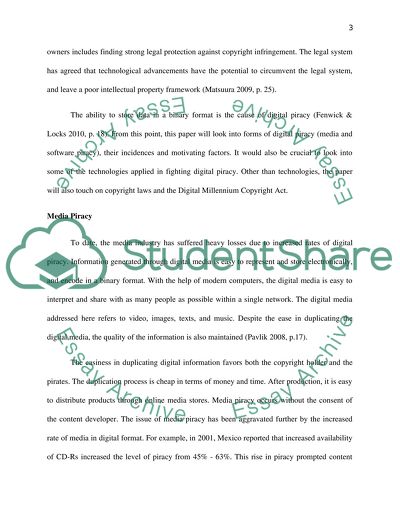Cite this document
(Copyright and the Digital Age Essay Example | Topics and Well Written Essays - 2500 words, n.d.)
Copyright and the Digital Age Essay Example | Topics and Well Written Essays - 2500 words. https://studentshare.org/technology/1605452-one-of-the-primary-aims-of-copyright-is-to-ensure-society-is-rich-with-creative-works-without-copyright-creators-would-not-create-new-works-discuss
Copyright and the Digital Age Essay Example | Topics and Well Written Essays - 2500 words. https://studentshare.org/technology/1605452-one-of-the-primary-aims-of-copyright-is-to-ensure-society-is-rich-with-creative-works-without-copyright-creators-would-not-create-new-works-discuss
(Copyright and the Digital Age Essay Example | Topics and Well Written Essays - 2500 Words)
Copyright and the Digital Age Essay Example | Topics and Well Written Essays - 2500 Words. https://studentshare.org/technology/1605452-one-of-the-primary-aims-of-copyright-is-to-ensure-society-is-rich-with-creative-works-without-copyright-creators-would-not-create-new-works-discuss.
Copyright and the Digital Age Essay Example | Topics and Well Written Essays - 2500 Words. https://studentshare.org/technology/1605452-one-of-the-primary-aims-of-copyright-is-to-ensure-society-is-rich-with-creative-works-without-copyright-creators-would-not-create-new-works-discuss.
“Copyright and the Digital Age Essay Example | Topics and Well Written Essays - 2500 Words”. https://studentshare.org/technology/1605452-one-of-the-primary-aims-of-copyright-is-to-ensure-society-is-rich-with-creative-works-without-copyright-creators-would-not-create-new-works-discuss.


